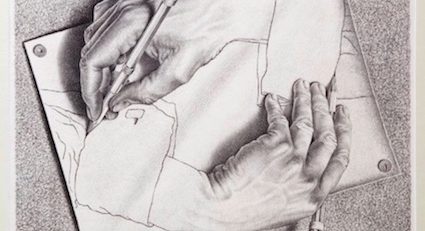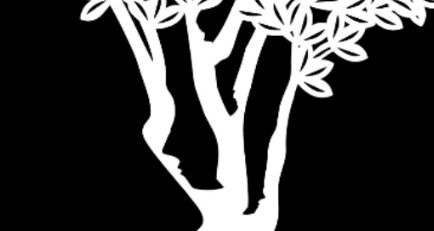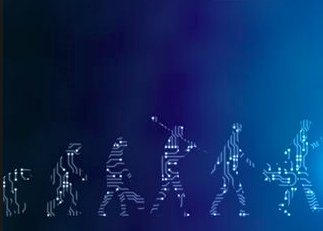Learning How To Change Part 1
Written by: Cahide Akkuzu
Reading time: 6 minutes
Whether we like it or not, there are times when we are facing situations that require us to go through a change process. Big or small, change is something that’ s always part of our life, we cannot escape it. For many of us change is a painful process. So instead of being a victim of change, let’s understand the process that will help us to learn how we can change!
Sometimes we ourselves initiate change willingly. While one part of us yearns to make this change, even if it is our own will, the other part of us feels uneasy or anxious. We may have received a promotion we’ve been waiting for a long time, or we may be starting a new project that excites us. We may finally have moved to the country that we were dreaming to live in. We may have prepared ourselves to have children or have been offered the dream job in the dream company. These may all be changes that we highly desire, in addition to the excitement of finally achieving what we want, these changes can also create stress and anxiety.
On the other hand, sometimes we may face an unexpected situation, something may happen to us that requires us to go through a change process, whether we like it or not, we have no choice! Think about the mass lay-offs that are happening nowadays, financial crises in certain markets or natural disasters that are happening all around the world. We may be impacted by any of those or any other situation that we are actually not prepared to face.
German quantum theorist and Nobel Prize winner Max Planck says: “When you change the way you look at things, the things you look at change.“ So, let’s see change not as a challenge that we have to manage, but as a process that we can consciously approach and thereby learn how to change.
When we talk about struggling with change, what we are often really struggling with is transition. William Bridges is an expert on change and transition. He has studied change and transition for 30 year. In his book “Transitions: Making Sense of Life’s Changes”, he explains that things don’t change just because you are now in a different situation, or are suddenly doing something differently or you stated that you will. Change and transition are two different concepts that go hand-in-hand. Change can be an external factor like living in a different country, having been promoted or having become a working mother. Transition describes the internal shifts we make in response to change. It is a psychological 3-step process people go through as they internalize and come to terms with their new situation.
We cannot expect people to behave differently just because their circumstances changed, when their minds and identities haven’t yet made the shift. People expect to be able to move straight from the old to the new. But this isn’t a trip from one side of the street to the other. It’s a journey from one identity to another, and that kind of journey takes time. Here is how William Bridges describes this journey:
“Change is situational. Transition, on the other hand, is psychological. It is not those events, but rather the inner reorientation and self-redefinition that you have to go through in order to incorporate any of those changes into your life. Without a transition, a change is just a rearrangement of the furniture. Unless transition happens, the change won’t work, because it doesn’t “take.”
― William Bridges, Transitions: Making Sense of Life’s Changes
William Bridges describes the journey from one identity to another as a three-stage process:
- Endings
- Neutral Zone
- Beginnings
Nearly every transition you experience will begin with an ending of some kind, as a previously established status quo is disrupted. Next comes the neutral zone, an uncomfortable in-between state that follows the initial disruption but precedes the establishment of a new status quo. In this stage we are in a limbo and want to rush through this as fast as possible. This is where we have to be careful because it’s critical to give this in-between stage time so you can effectively process the ending before moving on to your new beginning. Unlike “starts”, which are based on external circumstances, beginnings occur once there is an internal shift, a willingness to embark into a new identity or experience.
Once you have processed the loss that comes with endings, and given yourself the time and space to go through the limbo of the neutral zone, you are ready to embark on your beginning, which itself is a process.
Endings
Let’ s take a closer look at the stage of Endings. Regardless of whether it is positive or negative, dealing with change means that something is ending. Endings mean losing something, often something that is very important for us. Losses bring with it often psychological pain and we know that psychological pain hurts as much as physical pain. Getting promoted, even though a cause for celebration, can mean loss of fellowship with your peers who might now be your direct reports. It may also mean loss of the comfort of a familiar role. Therefore, the first thing that we need to learn is how to safely go through the process of ‘Ending’, of acknowledging what we are losing, of acknowledging what identity we are leaving behind us.
Before you can move forward it is crucial to process the loss and consciously choose to let go. Failure to identify and prepare for losses is one of the biggest challenges faced by people in transition. This first phase of transition is actually an ending: and end to who you used to be. You have to accept your losses and take time to grief for them. You have to let go of the old ways and the old identity.
“Transition always starts with an ending. To become something else, you have to stop being what you are now; to start doing things a new way, you have to end the way you are doing them now; and to develop a new attitude or outlook, you have to let go of the old.”
― William Bridges, Transitions: Making Sense of Life’s Changes
As we are setting off to transition, what we are about to lose or quit is always very valuable. We leave behind an identity that is very familiar to us, perhaps an identity that we have invested in and have created over the years. Let’s take a closer look at what these losses might be.
Bree Groff is a renowned change expert who enables companies and leaders to succeed in change. After years of experience, Bree Groff has identified six types of losses that can occur in change processes:
- Loss of Control- something is out of your control now. For example, if you have to receive treatment, you have to do what your doctor says. If your company is going through a change process and you are not involved in some decisions, you will lose control. If your children grow up and make their own decisions, you may lose control over them.
- Loss of pride- tasks that you are proud to do well are no longer in your area of responsibility or have become obsolete. You may be very proud of how well you work with your French clients through your familiarity with the French culture and your fluency in the language. But, when your company stops doing business in this country you may lose pride.
- Loss of Narrative- the narrative that you created for years is no longer meaningful.For example, online sales has completely changed the concept of customer experience. Companies that have plotted their stories on creating a certain customer experience in their store, experience this ‘loss of narrative’. Another example of this could be management style. Executives who have adopted a certain management style for years and have been successful are losing these ‘success stories’ as newer generations enter the workforce.
- Loss of Time- a project or job that you put a lot of time and effort in suddenly fails. Along with time you may have also financial losses and your hopes may be lost too.
- Loss of Familiarity- when you move to a new company, you leave the people and environment you are familiar with behind. When you change country or city, you leave your familiar environment behind you.
- Loss of Competence- when your current competencies are no longer working in your current role or you don’t yet have the competencies you need when you move on to a new role.
We can add other types of losses to this list. The common point is that with each loss, we lose an identity that is important to us. Talking about endings, loss and grief may sound awful but it is helpful. Your old identity is “dying” and you are acknowledging how far that old identity actually took you.
When I let go of what I am, I become what I might be. When I let go of what I have, I receive what I need. – from the book Tao Te Ching written by Lao Tzu
Whether the loss is physical or emotional, it is important to first identify the loss and then grief the loss. David Kessler is a well-known expert on grief. He co-wrote with Elisabeth Kübler-Ross ‘’On Grief and Grieving: Finding the Meaning of Grief through the Five Stages of Loss’’. In their book they describe the 5 stages of grief, which are denial, anger, bargaining, depression and acceptance. The stages aren’t linear and may not happen in this order. The important part of the grief process is that the stage of Acceptance is the stage where the power lies. We find power and control in acceptance.
Fully accepting the situation as it is without constantly wishing it would be different is the only way enabling us to change. And this isn’t only about accepting situations. We have to start accepting people for who they are as well and we have to believe them when they show us their true character.
Naming what we are losing, accepting what we are loosing and letting it go is a powerful step in the Ending Phase.
Easy said. So, how do we do all of that? Let’s look at what you can do in the “Endings” stage of this three-stage transition process:
Identify Your Losses
Take the time to list all the ways in which your new life will be different. List them down to all the details you can think of. Consider the ripple effects of these on other areas of your life and add those to the list as well. Don’t miss any details.Look at your list of losses and review with these questions:
- Now that this change has occurred, what old ways of doing things must I give up?
- Because of this change, what parts of myself and the way I see myself are now out of date?
- Are there old ways of doing things that I will now have to rethink?
- Because of this change, what are my needs that are no longer met? How can I meet those needs in other ways?
As you go through this process, having the ability to express your emotions in a healthy way is another step to processing things before deciding to let them go.
Get clarity
Get clarity about what’ s over and what isn’t. You may think that everything will completely change, but once you take a closer look you may actually realize that this is not true.
Look at the list you have made for yourself and group them. You will get more clarity about the things that ‘actually’ do require change. Look at the main themes you have grouped and determine which identities are affected by this change.Get clarity about which identities you need to give up or change. Likewise, identify, list and group what will not change during this time. Also clarify which of your identities are not affected by this change. This clarity will give you a realistic picture of the situation and the process that you are facing. In this way, you will further support the process of processing, accepting, and letting go of your losses.
Say goodbye to your losses
Find a way to say goodbye to your losses. Some losses are irreplaceable. In these situations, it is natural and necessary to grief and to find a way to say goodbye, literally or symbolically. This will help make room for all new things to come. Take time to mourn the losses. It is natural to feel angry, sad, scared, depressed, and confused by your loss. Do not try to get rid of your emotions, share your feelings with people you trust.
Our biggest friend and worst enemy is our own mind. Processing our losses is a mental process. Do not identify yourself with your thoughts. You are not your thoughts! Look at your thoughts from the outside, watch them come and go. It is in your hands to decide what meaning you attribute to these thoughts that come and go. If you choose to be a slave to your thoughts, you will be its slave. If you look at your thoughts as thoughts that come and go, regardless of your identity, and watch them from the outside, maybe you can attribute a different meaning to your thoughts. Perhaps you can get them to serve you.
Saying goodbye to your losses requires a proper closure. To truly let go and move on, sometimes you have to forgive people who aren’t even sorry. That takes so much strength, courage and humility. There’s nothing worse than holding onto resentment about someone or something for years, while they happily move on with life. And the reality is, doing this only hurts you. The most important thing is that we also have to learn to forgive ourselves.
If we switch to the new without actually really ‘Ending’ it will give us a sense of ‘unfinishedness’. Closure gives us a sense of completeness. Closure, acknowledges the end of something. Closure is about acknowledging accomplishments and regrets of that which we may be leaving unfinished behind us. Closure allows us to take a step forward to a new path. In Part 2 of this article, we will be looking at the “Neutral Zone”, which is the second stage of the change process.
“Holding on is believing that there’s only a past; letting go is knowing that there’s a future.”
― Daphne Rose Kingma
Resources:
Transitions: Making Sense of Life’s Changes – William Bridges
On Grief and Grieving: Finding the Meaning of Grief through the Five Stages of Loss. – David Kessler & Elisabeth Kübler-Ross
Bree Groff web site:
https://br.ee
https://br.ee/blog/
Context Professionals Corporate Coaching and Consulting




















